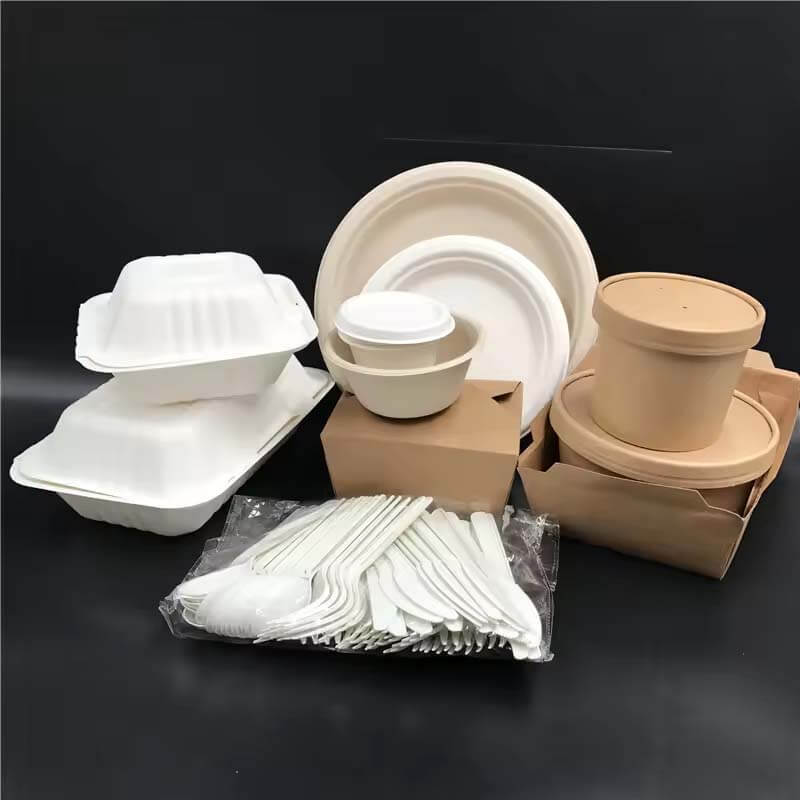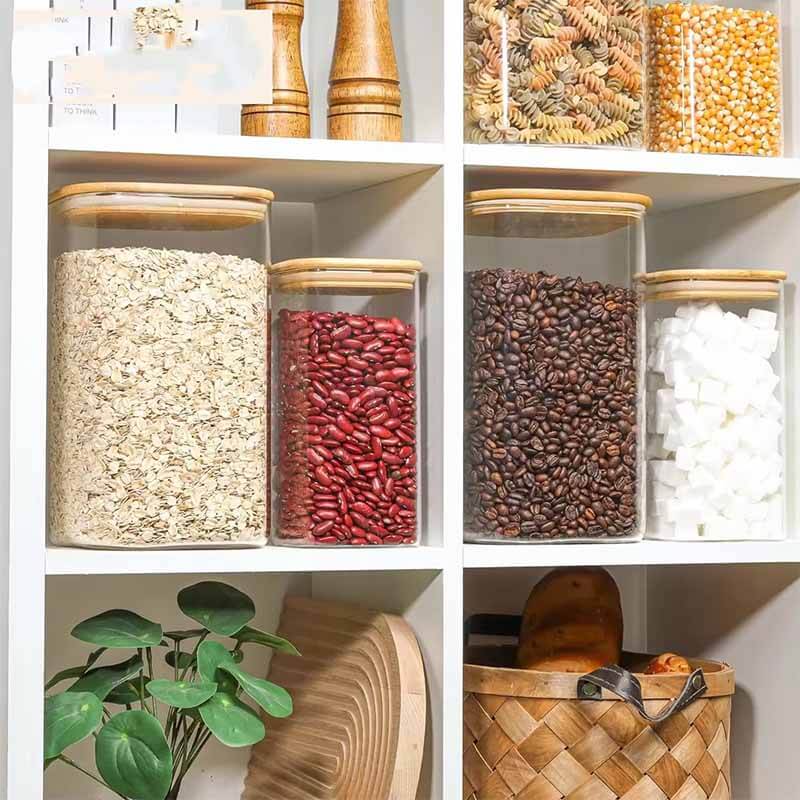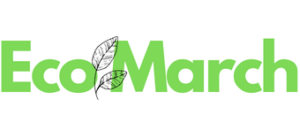
Do you know, only in the USA, there are 42 million metric tons of plastic packaging waste every year? The problem is already very serious, what about the world? Such a large amount of waste has caused bad results, clogged landfills, polluted the ocean, and harmed wildlife.
Therefore, countries around the world are looking for alternatives to traditional packaging. Today, we will talk about the eco friendly food packaging that is made from different materials and provide all the necessary information to you let you choose the best eco friendly packaging for food.
Why do We Need to Use Eco Friendly Food Packaging?
The replacement of traditional food packaging by environmentally friendly food packaging is an inevitable result of social development and progress, mainly due to the following three reasons.
Environmental Impact
First, the production and disposal of plastic will produce greenhouse gases and affect climate change. When plastic food packaging is carelessly discarded or buried in landfills, it takes hundreds of years for them to decompose. During this time, they break down into microplastics, which pollute soil and water sources, posing a threat to the health of animals, plants, and humans. These microplastics can also enter the ocean, causing injury or death to marine animals.
Consumer Demand
As people realize that they should change environmental problems through their own behavior, more and more people need sustainable food packaging, especially among young consumer groups. According to a report by Nielson, 73% of people worldwide are willing to change their consumption habits to reduce the impact on the environment. They are also more willing to support brands and products that are environmentally responsible.
Regulatory Pressures
Governments around the world have formulated policies on the use of plastic packaging. Some governments directly ban the use of plastic packaging or packaging that pollutes the environment, while some governments impose taxes on the use of plastic packaging. Therefore, various industries are now seeking sustainable packaging solutions and custom eco friendly packaging for their products.
How Can We Define Eco Friendly Packaging Materials?
When we talk about eco friendly food packaging, the determination is the material. So, what qualities must this packaging have to be called environmentally friendly?
Biodegradability
One of the eco friendly packaging is the material can break down naturally and without causing any harmful element to the environment. The biodegradable materials can turn into water, carbon dioxide, and biomass by the action of natural organisms like bacteria and fungi. This process should occur within a reasonable timeframe and should not leave any toxic substances.
Renewability
The green food packaging must be renewable, these resources must be sustainably harvested, such as bamboo, corn starch, or sugarcane. We have to ensure these resources are harvested responsibly to prevent depletion.
Recyclability
The recyclability of the packaging material is another important factor, recyclable materials can reduce the need for virgin resources and minimize waste. Packaging materials with high recycling rates are preferred because recycling itself is energy-saving and environmentally friendly.
Performance
Eco food packaging needs to meet the request of protect and store the food. The packaging should be durable, can withstand transportation and handling, and also provide adequate barrier properties to protect against moisture, oxygen, and other external factors. So, when we talk about sustainable packaging for food, it is not only sustainability but also functionality.
Cost-Effectiveness
The green food packaging must be economically viable for both manufacturers and consumers. In the past, disposable plastic packaging is widely used and its cost is low. Nowadays, with the advancement and innovation of technology, the cost of sustainable packaging can also be reduced, and ultimately a balance can be achieved between the economic and environmental benefits of packaging.

Common Eco-Friendly Packaging Materials
Based on different usage and different purposes, there any various kinds of eco friendly food packaging materials in the market. Let’s see the common types below:
Paper and Cardboard
- Advantages: Paper and cardboard are frequently used as environmentally friendly packaging materials since they are biodegradable and can break down naturally. They can also be recyclable to reduce waste. This material is generally sourced from trees, which can be sustainably harvested.
- Disadvantages: For certain uses, cardboard and paper may require additional coatings to provide moisture resistance. This complicates the recycling process. They also have limited durability compared to some other durable materials.
Bioplastics
- Material Types: PLA (Polylactic Acid), PHA (Polyhydroxyalkanoates).
- Advantages: Bioplastic is made from corn starch, sugarcane, and other plant materials. They can be broken down in industrial composting facilities to reduce the burden of landfills. The compostable food packaging made from this material can be regarded as a great alternative to traditional petroleum-based plastics.
- Disadvantages: Due to the limited availability of industrial composting facilities, composting bioplastics is not easy to do properly.
Glass
- Advantages: Glass is one of the most sustainable packaging materials due to its reusability and recyclability. In addition, glass does not react with food or beverages, which can maximize the taste of the food itself. Glass can also be recycled an unlimited number of times, which is an excellent material for reducing waste.
- Disadvantages: The glass is heavy and fragile, this will increase the cost of transportation and the risk of breakage. The production of glass will also require lots of energy.
Metal (Aluminum)
- Advantages: Due to its durability and resistance to corrosion, aluminum is a good choice for food and beverage packaging. This material is also lightweight and recyclable.
- Disadvantages: The production of aluminum requires a lot of energy, which is not friendly to the environment. Aluminum is not biodegradable, so this material relies on effective recycling systems heavily.
Plant-Based Materials
- Material Types: Bamboo, palm leaves, sugarcane (bagasse).
- Advantages: Plant-based materials are highly sustainable and they come from renewable sources. They are biodegradable and compostable, which is the first choice for environmentally friendly packaging.
- Disadvantages: Due to the material’s limited durability, they are not suitable for all types of packaging.
Mushroom Packaging
- Advantages: Mushroom packaging is a new material, which is made from made from agricultural waste and mycelium. This material is lightweight, compostable, and renewable.
- Disadvantages: This material is not yet popular and the production cost is relatively high.

Which is the Best Material to Make Eco Friendly Food Packaging?
After knowing what is eco friendly packaging materials, how can we choose the best material to make our sustainable food packaging? We should consider 3 aspects.
Environmental Impact
- Paper and Cardboard: Low carbon footprint, high recyclability, and biodegradability. However, the production of paper and cardboard will use significant energy and water. If they are coated with a waterproof coating, the recycling can get complicated.
- Bioplastics: Lower footprint than traditional plastic. high biodegradability in the industrial composting facility, but not sufficient in home composting. Can be recyclable, but easy to mix with traditional plastic.
- Glass: High carbon footprint and can not biodegrade. But glass has high recyclability.
- Metal (Aluminum): Very similar to glass, aluminum also has a high carbon footprint and does not biodegrade, but with high recyclability.
- Plant-Based Materials: Low carbon footprint with high biodegradability and compostability.
- Mushroom Packaging: Low carbon footprint with high biodegradability and compostability.
Performance and Usability
- Paper and Cardboard: Limited durability and moisture resistance, suitable for lightweight and dry products, not suitable for heavy and wet items.
- Bioplastics: High strength but can be brittle, good moisture resistance and protective qualities.
- Glass: High durability, high barrier properties, excellent moisture resistance, and high protective qualities. But easy to break.
- Metal (Aluminum): High durability, resistant to corrosion, excellent moisture resistance. Very suitable for beverages and food items that need a strong barrier against light and oxygen.
- Plant-Based Materials: Moderate durable, suitable to make the disposable packaging to hold lightweight and non-perishable items. Among them, packaging materials made from bagasse have good moisture-proof properties.
- Mushroom Packaging: High durability, suitable for fragile items, because this packaging material has good shock absorption.
Cost and Availability
- Paper and Cardboard: The cost is low and widely used in various industries.
- Bioplastics: Cost is higher than traditional plastic, a great alternative to the traditional plastic.
- Glass: Cost is high but need to pay special attention when transporting.
- Metal (Aluminum): Moderate cost, especially for beverage packing.
- Plant-Based Materials: The cost is higher than paper but lower than bioplastic. Widely used in disposable food packaging and many other industries.
- Mushroom Packaging: This is a new material, the cost is high, and limited availability.
So, which is the best material to make your environmentally safe food packaging depends on your specific needs, such as environmental impact, performance, use, cost, etc.
Whether you are an individual or a business, we all need to take action to support eco friendly packaging. If you want to customize plant based packaging, Eco March must be your best choice!
You may also interested in:
Go green with sustainable food packaging
John Q
John Q is Eco March’s Product Manager. With 5 years of prior experience in the food industry after graduating from university, he has been an integral part of Eco March. He excels in creating and developing eco-friendly food packaging products with a keen focus on enhancing the consumer experience.
Latest Products
Contact Us
Phone: +86 1358 4476 870
WhatsApp: +86 1358 4476 870
Email: info@ecomarch.com
Address: No.1179, TangShi Road, YangShe Town, ZhangJiaGang City, Jiangsu Province, China



